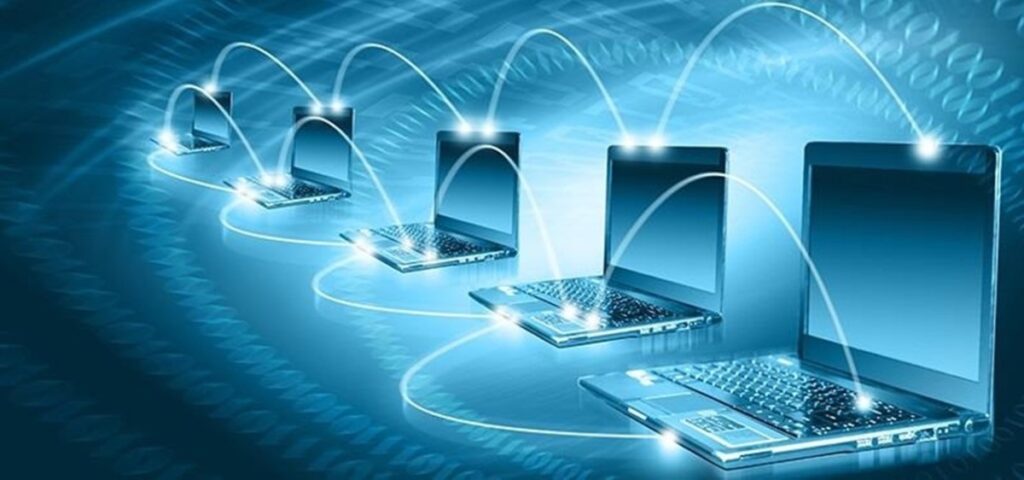Let us learn about data communication and data flow. Today we will be learning about data communication, data flow, and the importance of protocol.
Data Communication
Data communications are the exchange of data between two nodes. If there are two nodes, they are going to exchange data via some form of link or transmission medium. The transmission medium is the cable we have seen data communication it means two nodes are going to exchange data.
Data Flow
It means the data is going to flow from one node to another node and there are three different types of data flows, they are flows simplex, half duplex, full duplex.
For online Data services please visit https://www.xtechbuy.com/
Simplex
Firstly, the simplex it is always the unidirectional communication, one node can transmit another will receive the data. For example, keyboards are connected to a CPU keyboard is going to give data to the CPU, whereas CPU is not going to give any data to the keyboard likewise are traditional monitors the data from the CPU is to be given to the monitor and monitor is not going to give any information to the CPU in both cases the data or the communication is always uni directional. This basic flow of data is called the simplex data flow.

Half Duplex
The communication is not in board directions. It means, it can send as well as it can receive, but not at the same time. The most important part about half duplex is that the communication can happen in board directions, but not at the same time. If one device is sending, the other device can receive and time both sending and receiving cannot happen at the same time. Example, in a walkie talkie we can talk as well as we can listen, but we cannot talk and listen at the same time. This type is called the half duplex data flow.

For general IT Support services for Businesses https://www.benchmarkitservices.com.au
Full Duplex
Simply Duplex in the previous case that is the half duplex communication happened in both directions, but not at the same time. Whereas in full duplex, communication can happen in both directions simultaneously. It means devices can send or receive data at the same time. Example, telephone line, we can talk as well as listen simultaneously in a telephone line. An example for simplex communication, when a computer is sending data in only in one direction. Then it is simplex if both sending and receiving can happen, but not at the same time. While we send data, it cannot receive any data at the same time. This type of communication is known as half duplex. While in full duplex mode of communication both sending and receiving can happen at the same time. If both sending and receiving can happen simultaneously then we call as full duplex.

For cyber security related issues of businesses https://www.benchmarkitservices.com/cyber-security/
We will now see the importance of protocols
Any communication scheme, whether it is a postal communication or an internet communication or SMS way of communication, we always have certain things in common. They are sender destination or the receiver channel or media any communication will help these things. The sender destination or the receiver channel or the media and this communication will always be governed by certain protocols. Protocols are the rules that governs all the methods of communication. If there are no protocols, if Sam from Melbourne speaks at high speed which is received by John in Sydney cannot handle this communication, becomes useless. So, they must mutually agree upon certain rules. What if this Sam speaks in the language which John cannot understand, he may be grammatically correct but still there is no use in this communication again, what if this Sam keeps on talking at a high speed at the same time, not at all giving any room for John to respond. These are examples situations where the communication goes messy and unclear.
For Data security related issues visit https://www.benchmarkitservices.com/backup/
So, there is a need for protocols because a protocol is a set of rules that governs data communication. Protocol is a rule that governs data communication. protocol determines what is communicated in the network, how it is communicated in the network, and when it is communicated in the network.
Let’s talk about the protocols in the human communication in human communication there should be sender and the receiver there may be a single receiver, or a group of receivers and this human communication can be effective only when this communication involves common language and grammar otherwise communication will not be perfect. The speed and timing of delivery of speech is also very important in human communication. If Sam wants to ensure whatever he has talked is understandable by John, he should get confirmation or the acknowledgement from the receiver that is the destination only then human communication can be affected. We have just seen what human communication is, why do we need protocols in human communication.
For cloud-based solutions for the businesses like Google, AWS, and Azure visit https://www.benchmarkitservices.com/google-cloud-service-providers/
Importance of protocols in networks
Now we shall see why we need protocols in network communication. If there is a sender and there is a receiver, and this communication can be effective when the protocols are address properly. The message should be encoded format are an excellent computer in such a way that the destination can understand. Timing is also very important in network communication. Whether the message is only for one destination or some group of destinations or all the destinations in the network. That should also be dealt in the protocols bug, so a protocol defines message encoding, message formatting encapsulation, message timing, message size, and the delivery. This is the importance of protocols.



